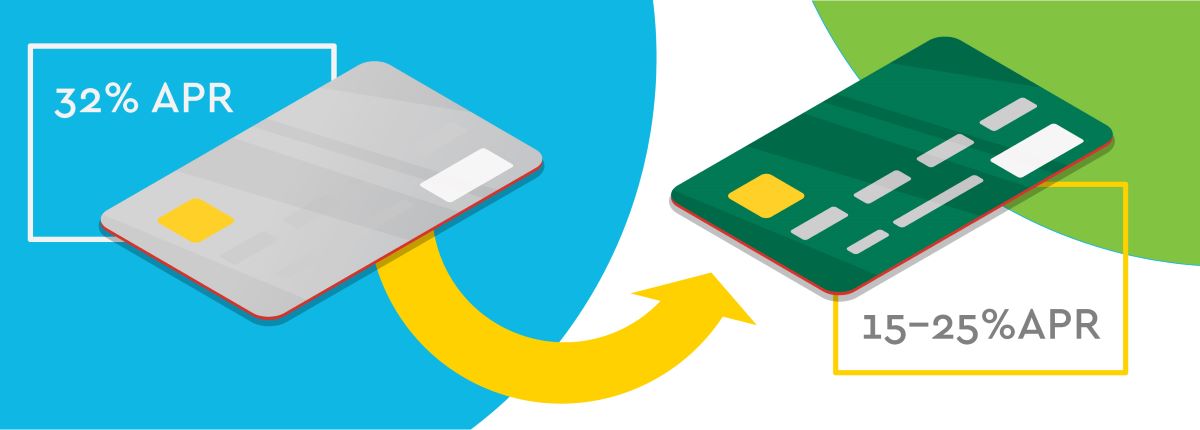

Finance
How Do I Do A Balance Transfer
Published: February 18, 2024
Learn how to do a balance transfer and manage your finances effectively. Discover the benefits and process of transferring balances for better financial management.
(Many of the links in this article redirect to a specific reviewed product. Your purchase of these products through affiliate links helps to generate commission for LiveWell, at no extra cost. Learn more)
Table of Contents
Overview of Balance Transfers
A balance transfer is a financial strategy that allows individuals to move their existing credit card debt from one card to another, typically with a lower interest rate. This can be an effective way to manage and reduce debt, ultimately saving money on interest payments.
When considering a balance transfer, it's crucial to understand the terms and conditions associated with the new credit card. This includes the promotional period during which a lower interest rate is applicable, as well as any fees that may be incurred during the transfer process. Additionally, it's important to assess the impact of the transfer on one's overall credit score.
Balance transfers can provide a temporary reprieve from high-interest debt, offering an opportunity to consolidate multiple credit card balances into a single, more manageable payment. However, it's essential to approach this strategy with a clear understanding of the potential benefits and drawbacks.
By evaluating the terms of the new credit card, assessing the impact on credit, and developing a plan to pay off the transferred balance within the promotional period, individuals can leverage balance transfers as a tool for achieving financial stability and reducing debt.
Understanding Balance Transfer Fees
When considering a balance transfer, it’s crucial to comprehend the associated fees to make an informed financial decision. Balance transfer fees are charges imposed by credit card issuers for transferring existing debt from one card to another. These fees are typically calculated as a percentage of the total amount being transferred.
While some credit card companies offer promotional periods with zero or low introductory interest rates, they often apply balance transfer fees, which can impact the overall cost-effectiveness of the transfer. It’s essential for individuals to carefully assess these fees and compare them across different credit card offers to determine the most cost-efficient option.
Additionally, understanding the potential impact of balance transfer fees on the overall financial situation is crucial. While a lower interest rate can lead to significant savings over time, high balance transfer fees may offset these benefits. Therefore, it’s advisable to calculate the total cost of the transfer, factoring in both the fees and the new interest rate, to make an informed decision.
Moreover, individuals should be aware of any additional fees associated with the new credit card, such as annual fees or late payment penalties. These costs can affect the overall financial impact of the balance transfer and should be considered when evaluating the feasibility of this debt management strategy.
By thoroughly understanding balance transfer fees and factoring them into the decision-making process, individuals can make informed choices that align with their financial goals and effectively manage their credit card debt.
Choosing the Right Balance Transfer Card
When selecting a balance transfer card, it’s crucial to consider several key factors to ensure that the chosen card aligns with one’s financial goals and circumstances. Here are essential considerations to evaluate when choosing the right balance transfer card:
- Introductory Interest Rate: Look for cards offering a low or 0% introductory interest rate for balance transfers. This promotional period provides an opportunity to make significant progress in paying down the transferred debt without accruing additional interest.
- Balance Transfer Fees: Compare the balance transfer fees across different credit card offers. While some cards may feature lower fees, others might offer no fees during promotional periods, contributing to overall cost savings.
- Regular APR: After the promotional period ends, the regular Annual Percentage Rate (APR) will apply to any remaining balance. It’s important to assess this rate and ensure it aligns with one’s financial plans for debt repayment.
- Credit Score Impact: Understand the potential impact of the balance transfer on one’s credit score. While initiating a balance transfer can initially result in a minor impact on credit, reducing overall debt and making timely payments can lead to long-term credit score improvement.
- Rewards and Additional Benefits: Some balance transfer cards offer rewards programs, cashback incentives, or other perks. Evaluating these additional benefits can provide added value beyond the initial debt consolidation.
- Financial Discipline: Assess personal financial discipline and commitment to debt repayment. Choosing a card with a manageable credit limit and refraining from accruing new debt can support successful balance transfer outcomes.
By carefully considering these factors and comparing available credit card offers, individuals can select a balance transfer card that best suits their financial needs and empowers them to effectively manage and reduce their credit card debt.
Applying for a Balance Transfer
Once an individual has identified a suitable balance transfer card, the next step involves the application process. Applying for a balance transfer typically involves the following key steps:
- Research and Comparison: Before applying for a balance transfer, it’s essential to conduct thorough research and compare available credit card offers. This includes evaluating introductory interest rates, balance transfer fees, regular APR, and additional benefits to identify the most advantageous option.
- Review Eligibility Requirements: Prior to applying, review the eligibility requirements for the chosen balance transfer card. This may include minimum credit score criteria, income verification, and other specific qualifications set forth by the credit card issuer.
- Complete the Application: Once the preferred balance transfer card has been selected and eligibility requirements are met, complete the credit card application. This typically involves providing personal information, financial details, and consent for a credit check.
- Indicate Balance Transfer Request: During the application process, individuals can indicate their intent to initiate a balance transfer from an existing credit card. This may require providing the account details and balance transfer amount for the transfer request.
- Wait for Approval: After submitting the application, await the credit card issuer’s decision. Approval timelines can vary, and it’s important to refrain from initiating the balance transfer until the new card is officially approved and activated.
It’s important to note that while a balance transfer can offer significant benefits in terms of debt consolidation and interest savings, it’s essential to approach the process with a clear understanding of the terms and responsibilities associated with the new credit card. Additionally, maintaining timely payments and adhering to the terms of the balance transfer offer are crucial for maximizing its financial advantages.
By navigating the application process with careful consideration and attention to detail, individuals can successfully secure a balance transfer card that supports their debt management goals and sets the stage for effective financial progress.
Completing the Balance Transfer Process
Once the application for a balance transfer card has been approved, individuals can proceed with the final steps to initiate and complete the transfer of their existing credit card debt. The following actions are essential for successfully finalizing the balance transfer process:
- Confirm Approval and Credit Limit: Upon receiving approval for the new balance transfer card, confirm the assigned credit limit. Understanding the available credit is crucial for determining the maximum amount that can be transferred from existing credit cards.
- Initiate the Balance Transfer: Contact the new credit card issuer to initiate the balance transfer from the existing credit card(s). This typically involves providing the account details and transfer amount for each applicable balance.
- Verify Transfer Completion: Once the balance transfer request has been submitted, verify the completion of the transfers. This may involve monitoring the existing credit card accounts to confirm that the balances have been successfully moved to the new card.
- Update Payment Information: Ensure that scheduled payments for the transferred balances are updated to reflect the new credit card account. This includes adjusting automatic payments and payment details to align with the terms of the balance transfer offer.
- Adhere to Payment Deadlines: With the balances successfully transferred, it’s crucial to adhere to the payment deadlines and terms outlined by the new credit card issuer. Making timely payments is essential for maximizing the benefits of the balance transfer and avoiding potential penalties or interest accrual.
Completing the balance transfer process requires attention to detail and proactive management of the transferred balances. By staying informed about the status of the transfers and ensuring that payment information is updated accordingly, individuals can effectively leverage the benefits of the balance transfer offer and make tangible progress in reducing their credit card debt.
Managing Your Balance Transfer
Effectively managing a balance transfer is essential for maximizing its financial benefits and achieving long-term debt reduction. The following strategies can help individuals navigate the process and maintain control over their transferred balances:
- Payment Discipline: Commit to making timely payments on the new balance transfer card. Consistent and punctual payments are crucial for avoiding late fees and maximizing the impact of the lower interest rate offered during the promotional period.
- Debt Repayment Plan: Develop a clear plan for paying off the transferred balances within the promotional period. This may involve setting monthly payment goals and prioritizing the reduction of high-interest debt to achieve significant savings.
- Minimize New Charges: Refrain from accruing new charges on the balance transfer card, especially if it carries a different interest rate for purchases. Focusing on debt repayment without adding new expenses can support effective financial progress.
- Monitor Credit Utilization: Keep a close eye on credit utilization, aiming to maintain a utilization ratio below 30% of the available credit limit. This can positively impact credit scores and overall financial health.
- Review Regular APR: Stay informed about the regular Annual Percentage Rate (APR) that will apply after the promotional period. This knowledge can guide future financial decisions and debt management strategies.
- Utilize Financial Tools: Leverage financial tools and resources to track progress and manage the balance transfer effectively. Budgeting apps, credit monitoring services, and debt repayment calculators can provide valuable insights and support informed financial decisions.
By proactively managing the balance transfer, individuals can harness its potential to reduce debt, save on interest payments, and improve overall financial well-being. Maintaining a disciplined approach to debt repayment and staying informed about the terms and conditions of the balance transfer offer are key components of successful management.
Ultimately, a well-executed balance transfer, coupled with responsible financial management, can serve as a powerful tool for achieving debt reduction and paving the way toward enhanced financial stability and freedom.














